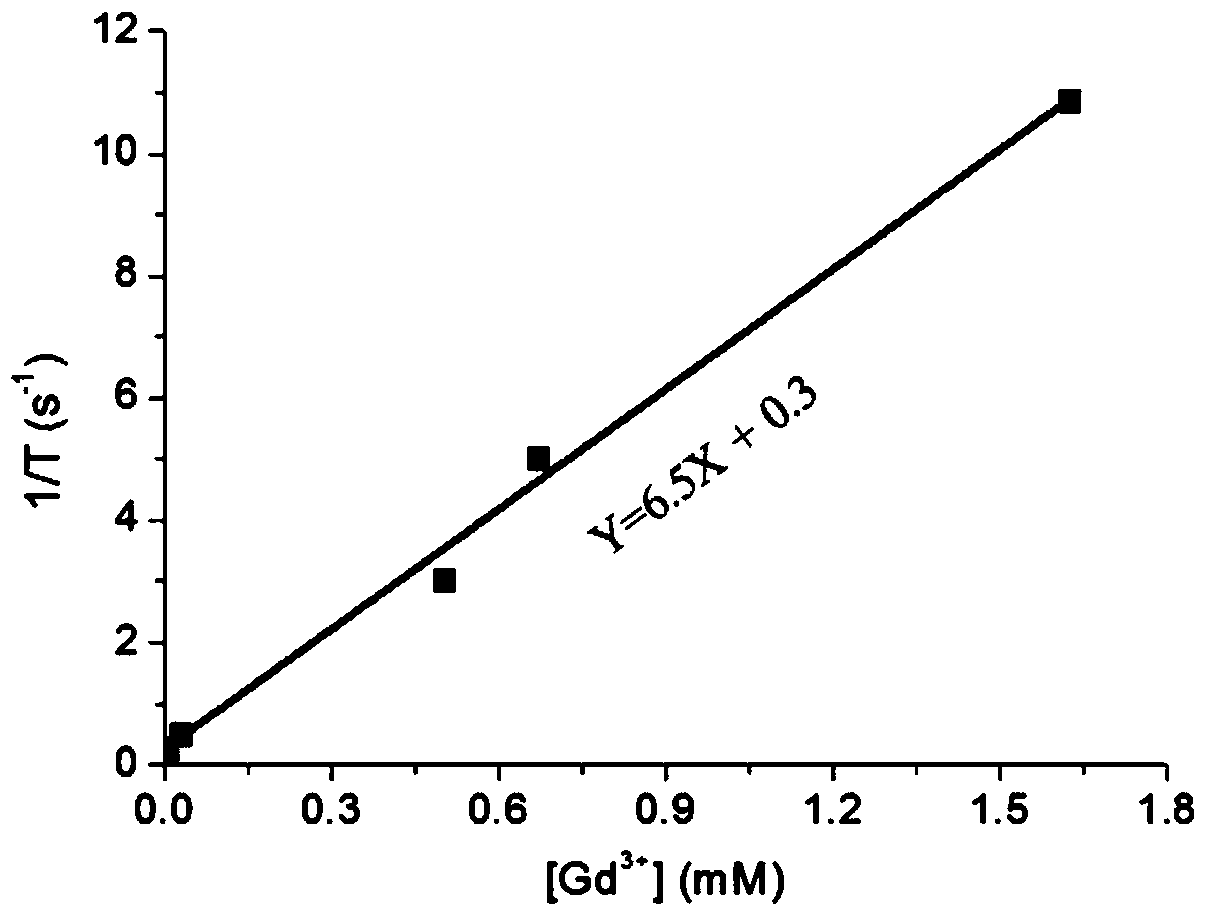A magnetic resonance imaging contrast agent based on nano-graphene oxide and its preparation method
A nano-graphite oxide and magnetic resonance imaging technology, applied in the field of radiodiagnosis, can solve the problems of poor dispersion of physiological solutions, unfavorable promotion and transformation, complicated preparation process, etc. good biocompatibility
- Summary
- Abstract
- Description
- Claims
- Application Information
AI Technical Summary
Problems solved by technology
Method used
Image
Examples
Embodiment 1
[0027] Mix and grind 1g graphite powder with 60g NaCl, wash and filter with water to remove NaCl; ultrasonicate the expanded graphite powder with 3:1 concentrated sulfuric acid and concentrated nitric acid for 20h, then measure 23mL 98%wt concentrated sulfuric acid into the reaction vessel, and stir for 8h , then add 5g of potassium permanganate at a rate of 0.1g / min, and stir the reaction; the mixture is stirred at 40°C for 0.5h, heated to 70°C, stirred for 45min, then added with 3mL of deionized water, and stirred at 105°C for 5min; Add 40mL of deionized water and stir at 100°C for 15min; then add 140mL of distilled water and 10mL of 30% hydrogen peroxide solution and stir for 1h; centrifuge repeatedly with 5%wt hydrochloric acid and distilled water to obtain nano-graphene oxide, which is dispersed in water by ultrasonic , the solution color is brown.
Embodiment 2
[0029] Sonicate 5ml graphene oxide for 1h, add 1.2g NaOH, 1.0g chloroacetic acid and sonicate for 3h, convert the hydroxyl group into carboxyl group, and generate graphene oxide containing carboxyl group; then add branched-chain polyethylene glycol (10mg / mL), corresponding EDC, NHS, generate functionalized nanographene oxide pGO, add water to dilute, centrifuge and wash, and finally disperse in water to prepare functionalized nanographene oxide pGO solution;
[0030] After testing, the results show that the pGO aqueous solution is uniform and stable, indicating that it has good dispersion and biocompatibility, and has a long circulation time in the body and a long imaging time window, which is beneficial for in vivo application and imaging diagnosis.
Embodiment 3
[0032] 600mg GdCl 3 Dissolve in 2 mL of deionized water, slowly add to 1 ml of pGO solution (1 mg / mL), and stir overnight at room temperature to obtain the mixture; transfer the obtained mixture to a 50K Da MWCO ultrafiltration centrifuge tube for centrifugation and washing, and dilute the centrifuged product to 1 ml. The MRI contrast agent pGO-Gd is prepared; especially pGO as a nano-carrier material has a large specific surface area and a high loading capacity of gadolinium ions, so the relaxation rate is higher, and the MR image quality is higher and clearer;
[0033] In the preparation process, there is no need to introduce chelating agents such as DTPA into the pGO system for further complex modification, and this step is omitted, which makes the preparation of the contrast agent easier and is conducive to popularization and commercialization.
PUM
| Property | Measurement | Unit |
|---|---|---|
| molecular weight | aaaaa | aaaaa |
Abstract
Description
Claims
Application Information
 Login to View More
Login to View More - R&D
- Intellectual Property
- Life Sciences
- Materials
- Tech Scout
- Unparalleled Data Quality
- Higher Quality Content
- 60% Fewer Hallucinations
Browse by: Latest US Patents, China's latest patents, Technical Efficacy Thesaurus, Application Domain, Technology Topic, Popular Technical Reports.
© 2025 PatSnap. All rights reserved.Legal|Privacy policy|Modern Slavery Act Transparency Statement|Sitemap|About US| Contact US: help@patsnap.com



